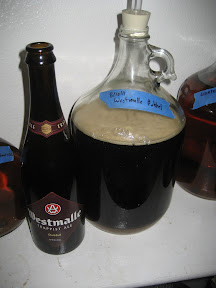just had jolly pumkins la roja, and also picked up a bottle of oro de calabeza. your right the don de dieu was not sour, but had a good flavor. if it was the yeast than it could be good later in my batch.
so this will be a couple of batches!
possible blending later.
so this will be a couple of batches!
possible blending later.








